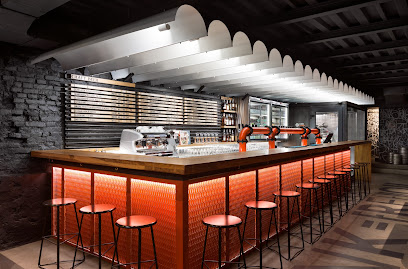
Explore the Legacy of Resilience at the Ukrainian National Chernobyl Museum
Discover the haunting legacy of Chernobyl at the Ukrainian National Chernobyl Museum, where history and resilience intertwine.
The Ukrainian National Chernobyl Museum offers a profound glimpse into the aftermath of the 1986 disaster through personal stories, artifacts, and exhibits that capture the essence of human resilience and the enduring impact of the Chernobyl tragedy. This must-visit museum is a poignant reminder of history and an essential stop for tourists seeking to understand Ukraine's past.
A brief summary to Ukrainian National Chernobyl Museum
- Provulok Khoryva, 1, Kyiv, Podil's'kyi district, 02000, UA
- +380444825627
- Visit website
Local tips
- Allocate at least 2 hours to fully appreciate the exhibits and displays.
- Consider visiting on a weekday to avoid larger weekend crowds.
- Check the museum's website for any special exhibitions or events during your visit.
- Photography is allowed, but be respectful of the sensitive nature of the exhibits.
- Visit the gift shop for unique souvenirs related to Chernobyl and the museum's themes.
Getting There
-
Car
If you are driving from Kyiv Reservoir, start by heading east on the main road towards Kyiv. Follow the signs for Kyiv and merge onto the H01 highway. Continue on this road for about 30 kilometers. As you approach Kyiv, follow the signs for the city center. Once in the city, take the exit toward Podil's'kyi district. Use a navigation app to guide you to Provulok Khoryva, 1, where the museum is located. Parking may be available nearby, but be prepared to pay for parking fees.
-
Public Transportation - Bus
From Kyiv Reservoir, locate the nearest bus stop and take a bus heading towards Kyiv, preferably one that goes to the central area. After approximately 30-40 minutes, get off at the 'Kontraktova Ploshcha' stop. From there, it is a 10-minute walk to the museum. Head east on the street towards the river, then turn left onto Provulok Khoryva. The museum will be on your right.
-
Public Transportation - Metro
To use the metro, first travel to the nearest metro station in Kyiv Reservoir by bus or taxi. Once at the station, take the metro towards 'Maidan Nezalezhnosti' on the Red Line (Line 1). At 'Maidan Nezalezhnosti', transfer to the Blue Line (Line 3) and travel towards 'Syrets'. Get off at 'Kontraktova Ploshcha' station. From there, it is a short 10-minute walk to the museum. Head east on the street towards the river, then turn left onto Provulok Khoryva. The museum will be on your right.
Discover more about Ukrainian National Chernobyl Museum
Iconic landmarks you can’t miss
Kontraktova Square, 2А
0.4 km
Discover the vibrant atmosphere and rich history of Kontraktova Square in Kyiv, a cultural hub with stunning architecture and lively markets.
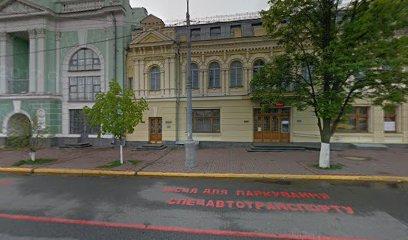
Park Landscape Alley
1.2 km
Explore the charming Park Landscape Alley in Kyiv, a serene park filled with lush greenery, artistic sculptures, and beautiful pathways perfect for leisurely strolls.
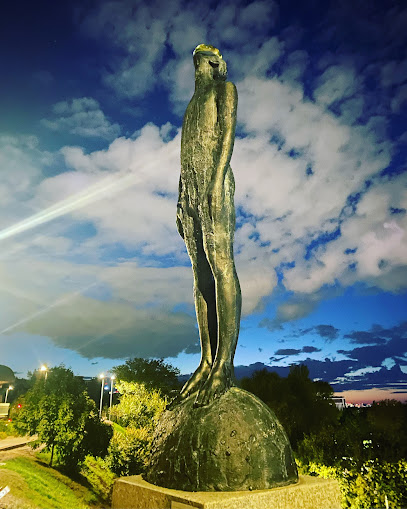
St. Michael's Golden-Domed Monastery
1.2 km
Discover the breathtaking beauty and cultural significance of St. Michael's Golden-Domed Monastery in the heart of Kyiv, a must-see for every traveler.
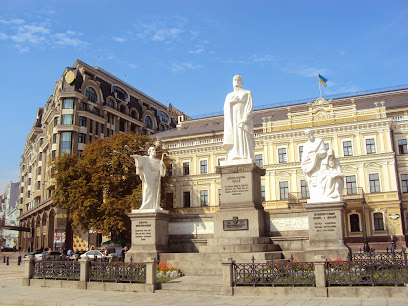
Володимирська Гірка
1.2 km
Experience the natural beauty and rich history at Volodymyrs'kyi Hill, a serene park offering stunning views and cultural landmarks in Kyiv.

Princess Olga Monument
1.2 km
Explore the rich history of Ukraine at the Princess Olga Monument, a captivating tribute in the heart of Kyiv's vibrant cultural scene.
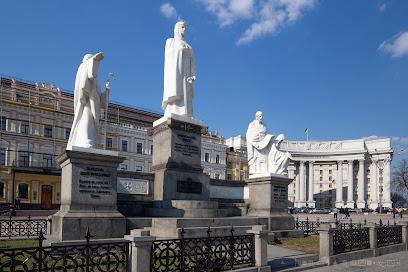
Ar-Rahma
1.3 km
Discover the architectural beauty and peaceful ambiance of Ar-Rahma Mosque in Kyiv, a cultural gem fostering unity and understanding.
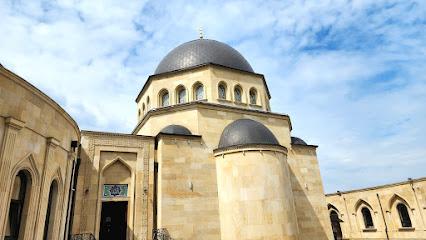
Volodymyr The Great Monument
1.3 km
Explore Kyiv's Volodymyr The Great Monument, a symbol of Ukraine's history, offering stunning views and a serene atmosphere amid the vibrant city.
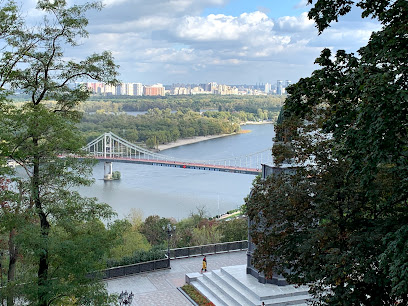
Bohdan Khmelnytsky Monument
1.4 km
Explore the Bohdan Khmelnytsky Monument in Kyiv, a striking symbol of Ukrainian history and culture, set in a vibrant urban landscape.
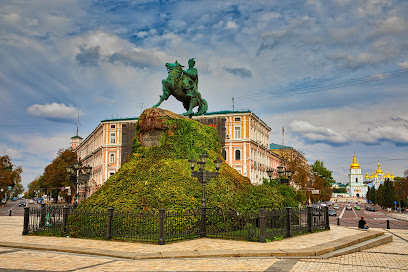
Sophia Square
1.4 km
Explore Sophia Square, a vibrant cultural hub in Kyiv, surrounded by historic architecture and lively events reflecting Ukraine's rich heritage.
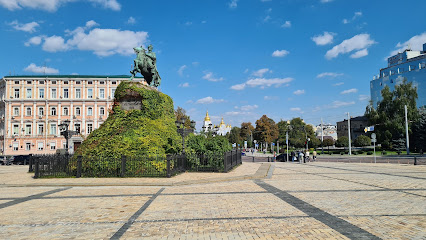
Volodymyrska St, 22
1.4 km
Explore the architectural wonders of Volodymyrska Street in Kyiv, where history meets vibrant culture in every corner.

Monument to the Magdeburg Rights
1.4 km
Explore the Monument to the Magdeburg Rights in Kyiv, a historical landmark that showcases the city's rich cultural heritage and vibrant atmosphere.
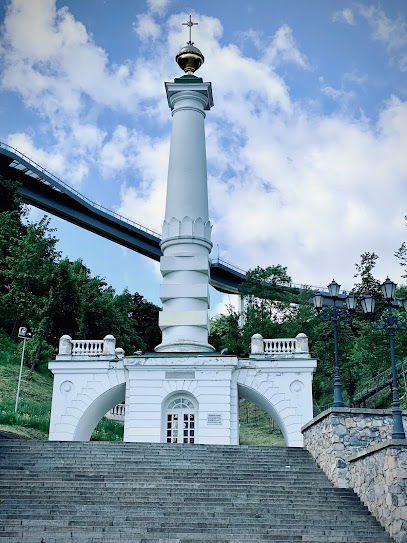
St. Sophia's Cathedral
1.5 km
Discover the grandeur of St. Sophia's Cathedral, an architectural marvel in Kyiv with breathtaking mosaics and rich historical significance.
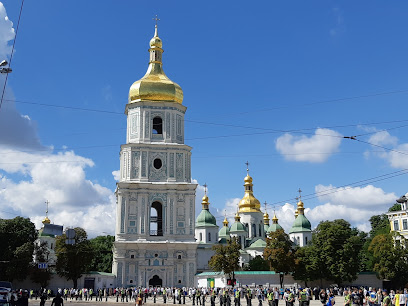
Arka Svobody Ukrayinsʹkoho Narodu
1.6 km
Discover the stunning Arka Svobody, a cultural landmark in Kyiv offering breathtaking views and a serene park for relaxation and reflection.

Park Bridge
1.6 km
Discover the beauty of Park Bridge in Kyiv, where breathtaking views and vibrant city life converge over the Dnipro River.
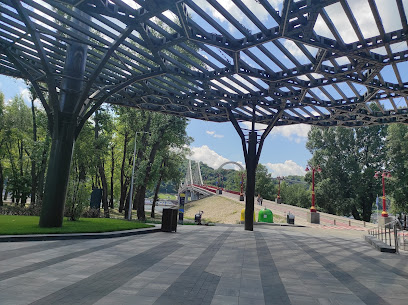
Khreshchatyy Park
1.8 km
Explore the lush landscapes and cultural monuments of Khreshchatyy Park, a serene urban oasis in the heart of Kyiv, perfect for relaxation and exploration.
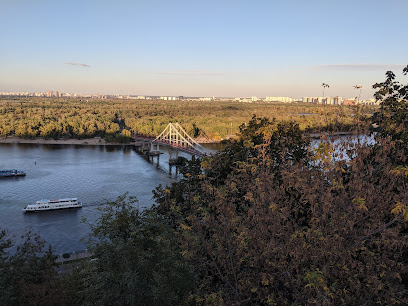
Unmissable attractions to see
Contract house
0.1 km
Explore the Contract House in Kyiv, a stunning historical landmark reflecting the rich architectural heritage of Ukraine.
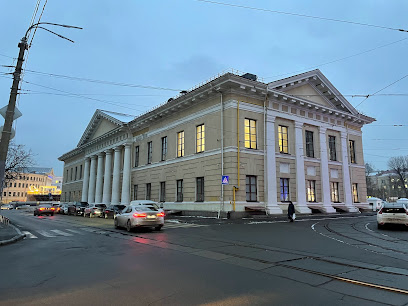
Kyiv Municipal Academic Opera and Ballet Theatre for Children and Youth
0.1 km
Discover the enchanting world of performing arts at Kyiv Municipal Academic Opera and Ballet Theatre for Children and Youth, a cultural gem for families.
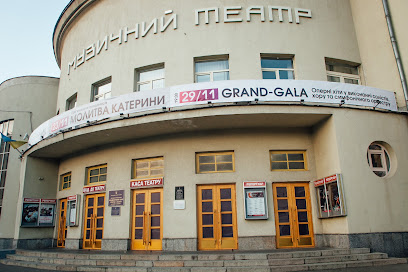
Ukrainian Culture And Arts Museum
0.2 km
Explore the Ukrainian Culture and Arts Museum, a vibrant cultural center in Kyiv showcasing the rich heritage and artistic traditions of Ukraine.

Gregory Skovoroda Monument
0.2 km
Explore the Gregory Skovoroda Monument in Kyiv, a historical landmark celebrating Ukraine's philosophical heritage amidst vibrant city life.
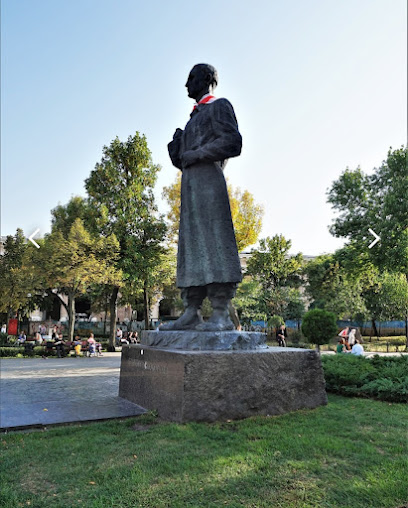
НоГГами спот
0.2 km
Discover the artistic allure and cultural richness of Nohgami Spot, a vibrant tourist attraction in the heart of Kyiv, Ukraine.
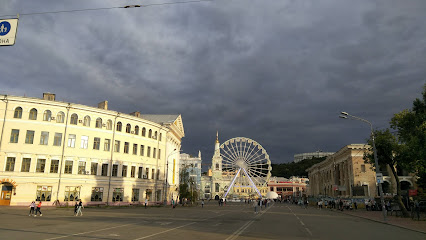
Museum of Charity (House of Peter the Great)
0.2 km
Explore the Museum of Charity in Kyiv, a historical landmark that celebrates the legacy of philanthropy initiated by Peter the Great.
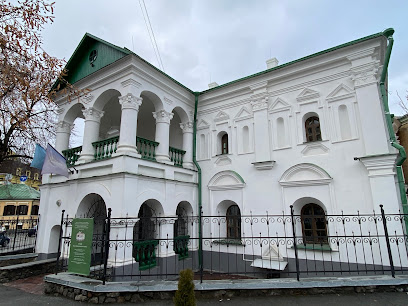
Hetmans Museum
0.2 km
Explore Ukraine's rich heritage at Hetmans Museum, where history and culture come alive through captivating exhibits and engaging displays.
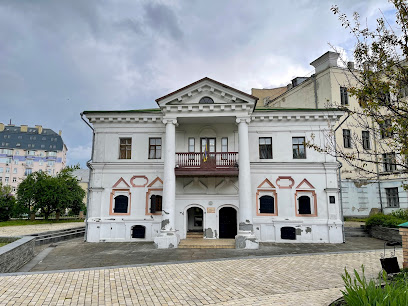
Kontraktova Square
0.3 km
Explore the vibrant charm of Kontraktova Square, a historic town square in the heart of Kyiv, perfect for cultural experiences and local flavors.
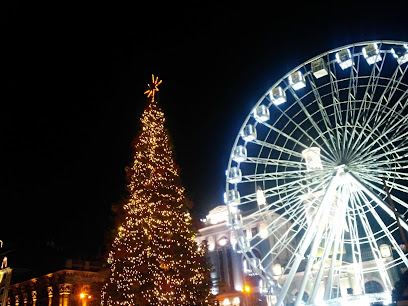
Samson and the Lion
0.3 km
Experience the grandeur of the Samson and the Lion Fountain, an iconic symbol of Kyiv’s rich heritage and vibrant culture, located in the heart of Kontraktova Square.
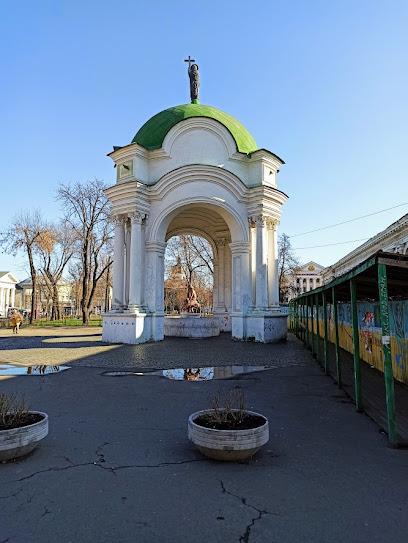
Hostynnyy dvir
0.3 km
Experience the cultural heartbeat of Kyiv at Hostynnyy Dvir, a landmark where history and modern life beautifully intersect.
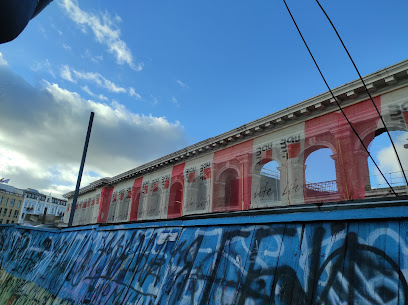
Mykola Prytyska Church
0.3 km
Explore Mykola Prytyska Church in Kyiv, a stunning Orthodox landmark offering a glimpse into Ukraine's rich spiritual heritage and architectural beauty.
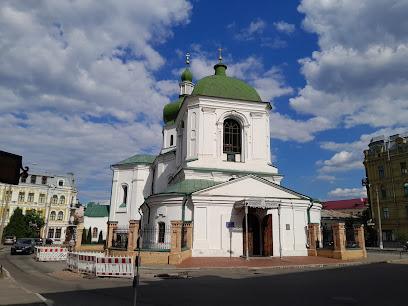
Pyrohoshcha Dormition of the Mother of God Church
0.3 km
Explore the architectural beauty and spiritual serenity of Pyrohoshcha Dormition of the Mother of God Church in the heart of Kyiv.

Pharmacy-Museum On Podil
0.3 km
Explore the rich history of pharmaceuticals at the Pharmacy-Museum on Podil, a hidden gem in Kyiv's vibrant Podil district.
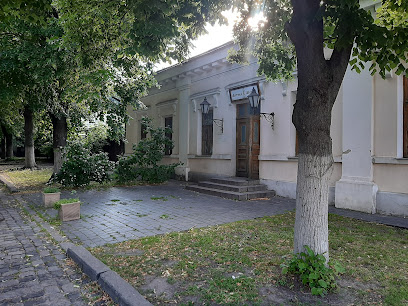
Monument Petra Sagaidachnogo
0.4 km
Discover the Monument to Petro Sagaidachny, a stunning historical landmark in Kyiv that celebrates Ukraine's rich maritime heritage and cultural pride.

Mist Teatr
0.4 km
Mist Teatr: A Cultural Gem in Kyiv Celebrating the Performing Arts and Nurturing Young Talent.
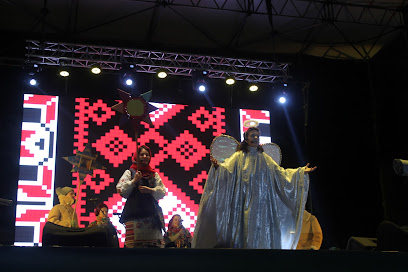
Essential places to dine
Win Bar
0.1 km
Discover the vibrant flavors of Kyiv at Win Bar—where exquisite barbecue meets an exceptional wine selection in an inviting atmosphere.
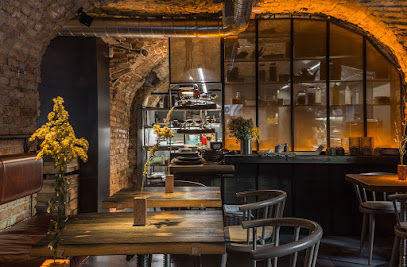
Podil East India Company
0.1 km
Discover authentic Indian cuisine and innovative cocktails at Podil East India Company in Kyiv's vibrant Podil district.
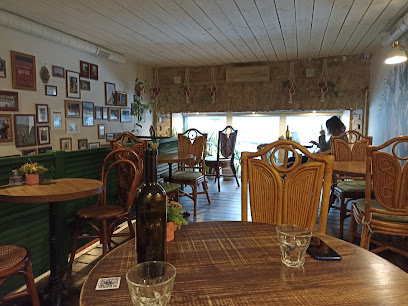
Hum:Hum
0.2 km
Experience the vibrant culinary scene at Hum:Hum in Kyiv – where local flavors meet international flair in a cozy setting.
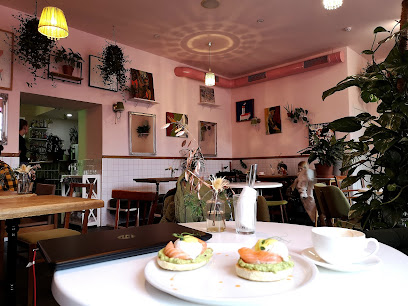
SUPRA Daily Restaurant
0.2 km
Experience the heart of Ukrainian cuisine at SUPRA Daily Restaurant in Kyiv's historic Podil district.
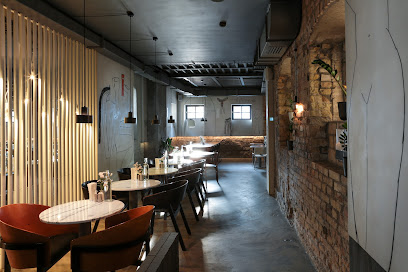
Gastro Tour
0.3 km
Discover the essence of Kyiv's culinary scene at Gastro Tour – where every dish tells a story.
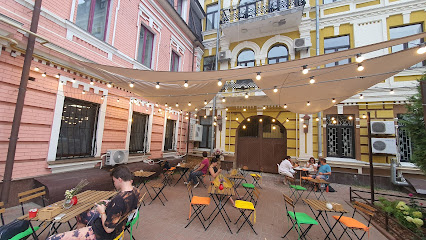
Пян-Се бар
0.3 km
Discover authentic Korean cuisine at Pyan-Se Bar in Kyiv, where tradition meets modern dining in a vibrant atmosphere.
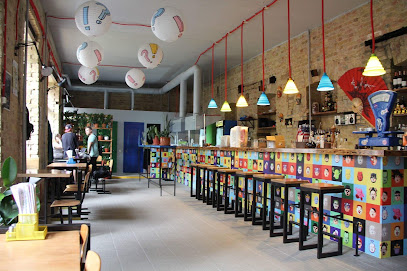
Tisto, Syr I Titka Bella
0.3 km
Experience authentic Italian cuisine at Tisto, Syr I Titka Bella in Kyiv's Podil district - where flavors meet tradition in a cozy setting.
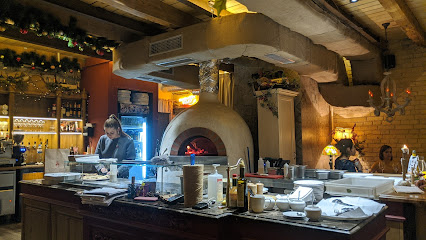
Mama Manana
0.4 km
Discover the rich flavors and warm hospitality of Georgia at Mama Manana in Kyiv – a must-visit destination for food lovers.
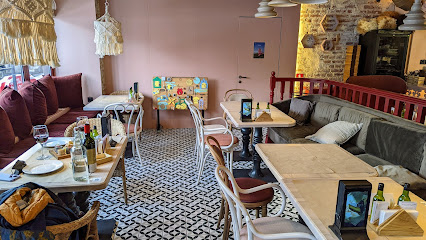
Gonzo Bar
0.4 km
Experience the best of Kyiv's nightlife at Gonzo Bar – where craft beers meet innovative cocktails in a vibrant setting.
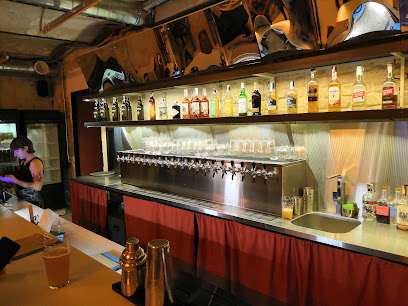
Dinner's
0.4 km
Discover the culinary magic at Dinner's in Kyiv - where traditional flavors meet modern dining experiences.
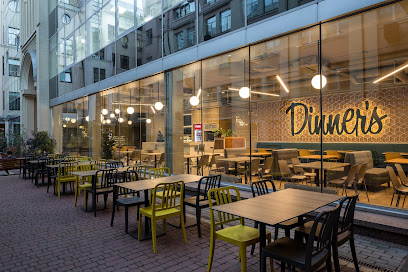
Puzata Hata
0.4 km
Experience the heartwarming flavors of traditional Ukrainian cuisine at Puzata Hata, Kyiv's beloved bistro destination.
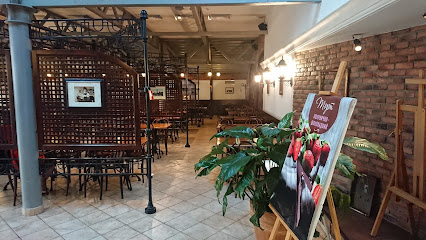
Vero Vero
0.4 km
Experience authentic Italian flavors at Vero Vero in Kyiv’s charming Podil district – where every meal is a celebration of taste.
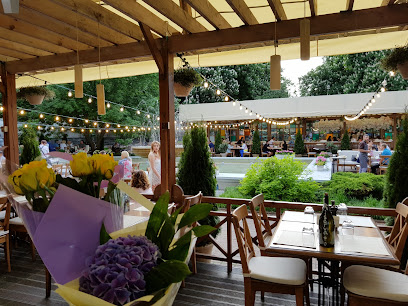
Rebernya Na Uzvozi
0.5 km
Experience the rich flavors of Ukrainian cuisine at Rebernya Na Uzvozi, where delicious meats meet craft beer in a cozy atmosphere.

Andrew's Irish Pub
0.5 km
Discover Andrew's Irish Pub in Kyiv - where authentic Irish cuisine meets vibrant culture in a cozy setting.
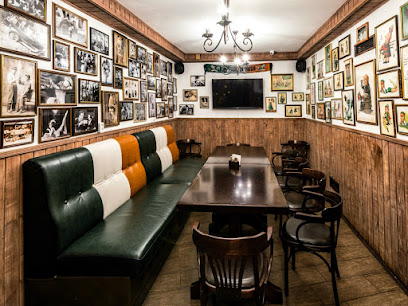
Casa Nori
0.5 km
Experience authentic Italian cuisine at Casa Nori in Kyiv's historic Podil's'kyi district—where tradition meets taste.
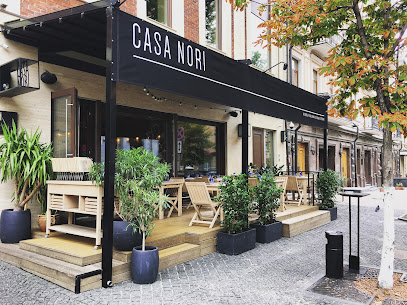
Markets, malls and hidden boutiques
Dobro store - Магазин подарунків
0.1 km
Explore Kyiv's Dobro Store for a unique selection of handcrafted gifts and authentic Ukrainian souvenirs that embody the spirit of local craftsmanship.
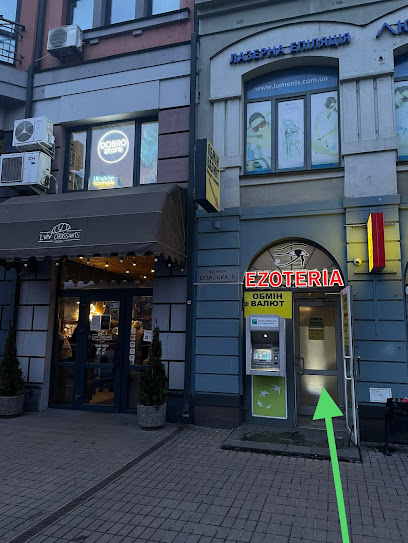
Купить итальянские джинсы харьков 2019
0.2 km
Explore the heart of Kyiv and discover exquisite Italian jeans, blending fashion with local charm in the Podil's'kyi district.
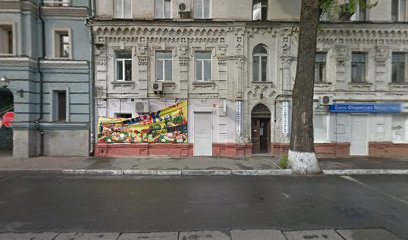
KMA Gift shop
0.2 km
Discover unique Ukrainian souvenirs at KMA Gift Shop in Kyiv's historic Kontraktova Square, where culture and craftsmanship unite.
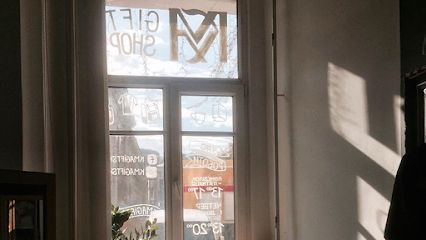
Natur Boutique - Organic shop of products
0.3 km
Experience the best of organic living at Natur Boutique, Kyiv's premier destination for organic foods and natural beauty products.

Mandala Art Shop
0.3 km
Explore Mandala Art Shop in Kyiv for unique gifts and local craftsmanship that capture the spirit of Ukraine in every handcrafted piece.
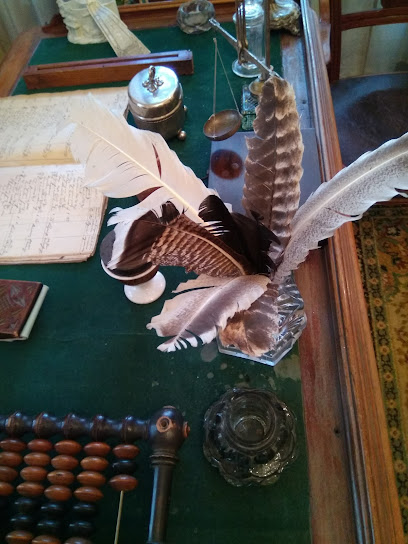
CAT ORANGE
0.4 km
Explore the vibrant world of women's fashion at Cat Orange, a stylish clothing store in Kyiv offering contemporary designs and unique accessories.
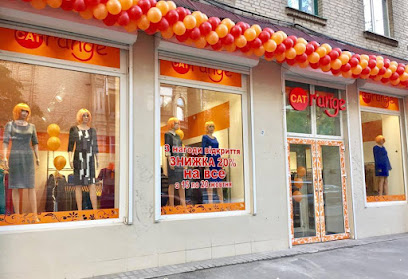
ETNODIM - бренд вишиванок
0.4 km
Explore the beauty of Ukrainian culture at ETNODIM – your destination for authentic vyshyvanka and exquisite handcrafted clothing in Kyiv.

Curandero Store
0.5 km
Discover the charm of Kyiv at Curandero Store, where unique gifts meet the art of tea in a cozy atmosphere.

Lviv Handmade Chocolate
0.5 km
Experience the finest handmade chocolates and delightful desserts in Kyiv at Lviv Handmade Chocolate, where every bite is a taste of bliss.

Onlady
0.5 km
Discover Kyiv's fashion scene at Onlady, offering chic women's clothing, lingerie, and a unique shopping experience in the heart of the city.

Kachorovska Post Office
0.5 km
Explore Kachorovska Post Office in Kyiv for stylish boots that blend modern design with traditional craftsmanship, a must-visit for fashion-forward travelers.

Kachorovska store
0.5 km
Explore Kachorovska Store in Kyiv: A hub of Ukrainian craftsmanship and style, offering unique footwear in a welcoming atmosphere.

The Вrand Melly
0.5 km
Experience the essence of Kyiv's fashion scene at The Вrand Melly, where unique clothing meets local craftsmanship.
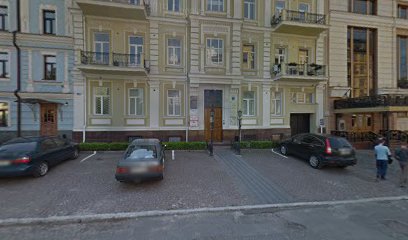
Mriyi Mariyi
0.8 km
Explore Mriyi Mariyi in Kyiv for unique handcrafted gifts and a taste of Ukrainian culture in a charming setting.
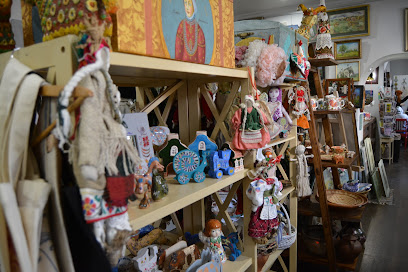
Andriivskyi Souvenir Market
0.8 km
Explore Andriivskyi Souvenir Market for authentic Ukrainian crafts and a cultural experience in the heart of Kyiv.

Essential bars & hidden hideouts
Platz bar Kyiv
0.2 km
Experience Kyiv's vibrant nightlife at Platz Bar - a cocktail haven in the heart of the city offering creative drinks and a welcoming atmosphere.
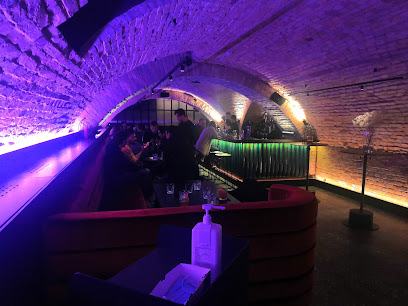
RE:PLACE
0.3 km
Experience wellness and creativity at RE:PLACE, a unique yoga studio in Kyiv offering classes, workshops, and therapeutic services.
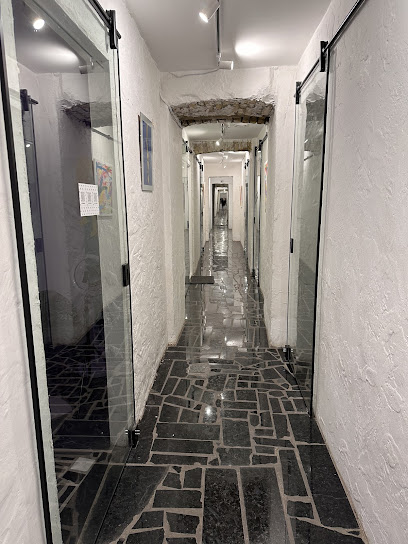
Drunken Monkey
0.3 km
Experience the vibrant nightlife of Kyiv at Drunken Monkey, where great drinks and a lively atmosphere await every visitor.
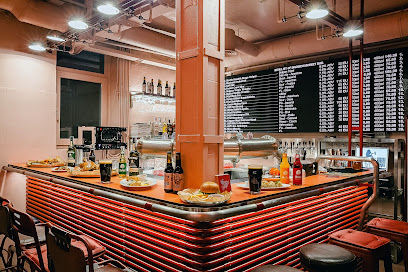
Grails Bar
0.3 km
Experience the vibrant nightlife of Kyiv at Grails Bar, where expertly crafted cocktails and a lively atmosphere await every visitor.
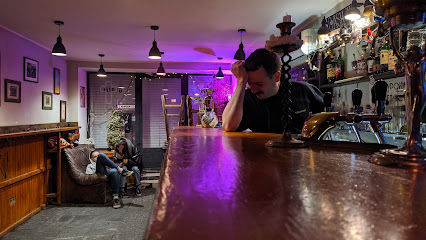
AMIGOS BAR
0.4 km
Discover the lively atmosphere and extensive drink selection at Amigos Bar, a local favorite in the heart of Kyiv's Podil's'kyi district.
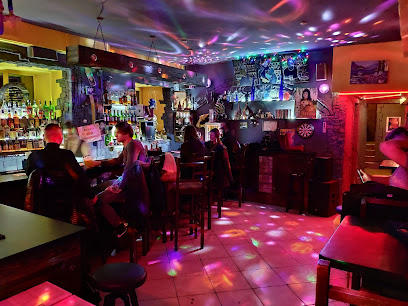
Wood You Like Bar
0.4 km
Discover the vibrant cocktail culture of Kyiv at Wood You Like Bar, where expertly crafted drinks meet a lively atmosphere.
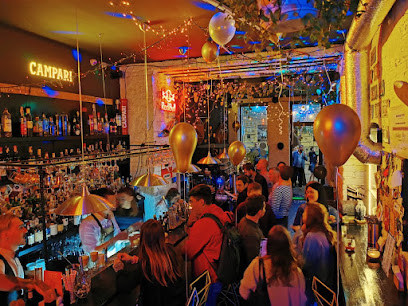
Beer on line
0.4 km
Discover the lively vibe of Beer on Line, a must-visit pub in Kyiv offering a diverse range of beers and a welcoming atmosphere for all.
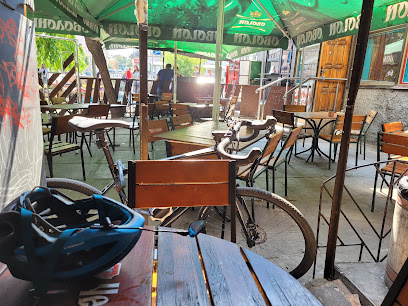
Khvylʹovyy
0.4 km
Experience Kyiv's vibrant nightlife at Khvylʹovyy, where creative cocktails and energetic music await in a chic atmosphere.
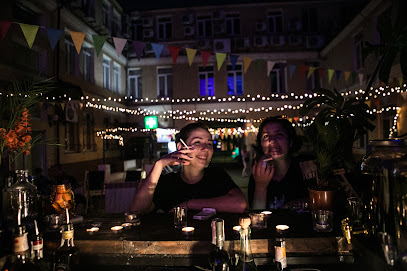
Shatun Pub
0.4 km
Discover the culinary delights of Shatun Pub in Kyiv, where traditional flavors meet a modern twist in a cozy gastropub setting.
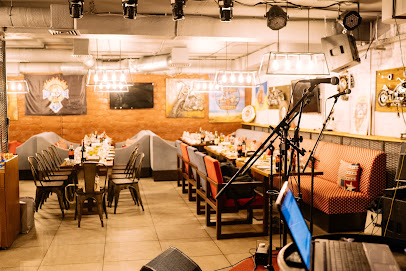
Pink Freud Kyiv
0.5 km
Experience the unique atmosphere and creative cocktails at Pink Freud, one of Kyiv's most popular bars in the heart of the city.
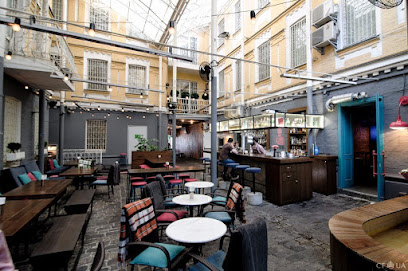
Fiji Lounge Bar
0.7 km
Discover the lively Fiji Lounge Bar in Kyiv, where karaoke, exquisite dining, and vibrant nightlife create the ultimate entertainment destination.
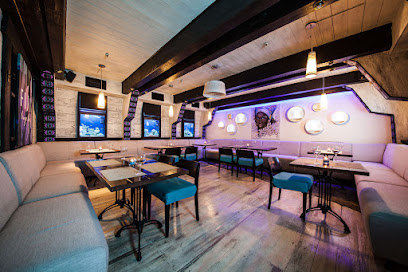
Frisson
0.7 km
Experience the vibrant nightlife of Kyiv at Frisson, where creative cocktails and a lively atmosphere await every visitor.
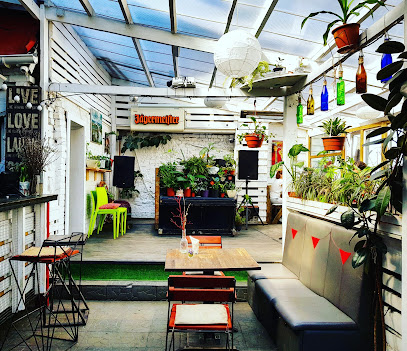
Na Podoli Pab
0.8 km
Experience the vibrant atmosphere and local flavors at Na Podoli Pab, a must-visit pub in the heart of Kyiv's Podil district.
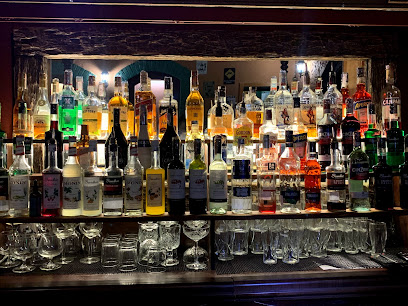
To Be
0.8 km
Experience the vibrant culinary scene of Kyiv at To Be, a lively bar and restaurant offering delicious dishes and exceptional hookah.
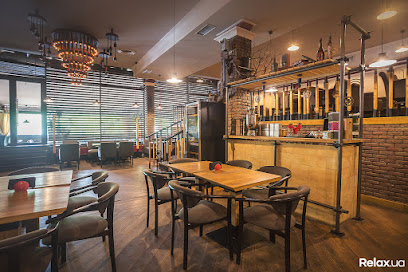
Punkraft
0.8 km
Experience the vibrant craft beer culture at Punkraft, Kyiv's premier bar for enthusiasts and casual drinkers alike.
